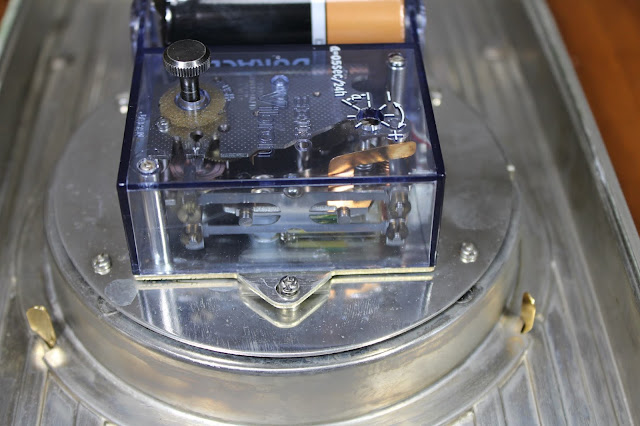Schatz Ship's Clock Tuning fork Mechanism c1960s
Significance
A "Lectromarin" Schatz ship's clock with a tuning fork mechanism c1960s. Tuning fork clocks were made in a brief period in the 1960s after transistors were developed but superseded by more accurate and simpler quartz clocks. No bell, which is unusual for a ship's clock, presumably too complicated with this mechanism, as with the battery balance-wheel clocks. Rare, as few were made but not particularly valuable. The term "Lectromarin" was used for both tuning fork and battery balance wheel clocks by Schatz.Discussion
The look of a traditional ship's clock but no bell for the ship's watch. Tuning forks were used in desk, wall and ship's clocks, as well as in wristwatches. Accurate, battery-operated but delicate and a little noisy with an audible hum.From eBay USA.
The face of the clock with a tuning fork symbol.
The tuning fork mechanism by Schartz. The green and red coils keep the tuning fork oscillating.






A wonderful post, thank you. If someone is searching forelectric wall clock can contact us!
ReplyDelete